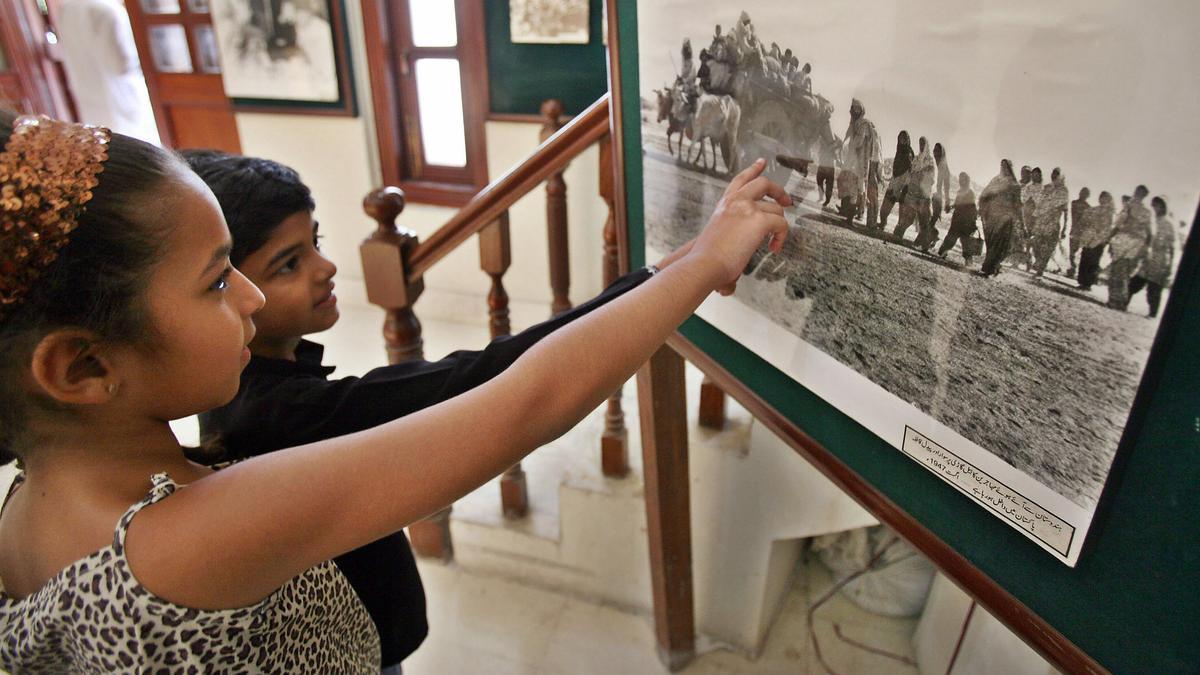
Those ‘ill-fated’ Partition months | Review of Nanak Singh’s ‘A Game of Fire’, translated by Navdeep Suri
The Hindu
Nanak Singh's powerful novels on Partition, translated by his grandson, offer a gripping historical narrative with universal themes.
In the space of eight months, from February and September of 1948, Nanak Singh signed off on forewords to two novels that chronicled the cataclysms that shattered the social equilibrium of Punjab in the run-up to Independence/ Partition. Singh is regarded as the ‘Father of the Punjabi novel’, counting 38 novels among his 59 books, and went on to win the Sahitya Akademi Award in 1962 for the novel Ik Mian Do Talwaraan.
Over the last few years, his grandson, the now-retired diplomat Navdeep Suri, has been translating his works and bringing them to a wider readership.
Two years ago, Suri published the English translation of the first of the 1948 novels, Hymns in Blood (Khoon de Sohile). This new book, A Game of Fire (Agg di Khed), is its sequel. Ideally they would be read in sequence, but it’s a measure of Singh’s mastery as a storyteller that A Game of Fire can be read as a standalone novel, with the backstory lightly filled in.
In Tomb of Sand, her International Booker Prize-winning Hindi novel, Geetanjali Shree had pivoted her story at Wagah on the India-Pakistan border, and asked, “…is every story really a Partition tale — love romance longing courage pain-in-separation bloodshed?” Maybe, or not, but Singh’s two novels were written on the run, as the consequences of Partition were still unfolding. They are a first draft of the story of “five-and-a-half ill-fated months” from March 5, 1947, when violence took Punjab in its grip.
Singh writes in the Foreword: “In my earlier novels, the plot was usually a creation of my own imagination, but that is not the case with these two books. The characters depicted in them may not be real but the events I’ve narrated are entirely true… I can assure my readers that my account of the incidents related to Pothohar (where the first novel is set) and Amritsar (where the second is set) is authentic, accurate and recounted with all the honesty that I could muster.” He thus beseeches the reader to take the book “as a historical narrative and not as a work of fiction”.
At the novel’s start, it is early March, the occasion is a meeting in Amritsar of a Unity Council formed a couple of months ago to be a “force of peace” in the face of communal strife. Satnam Singh, 25, is watching in dismay as the number of active members dips, and many among those who do attend are becoming polarised and advocating vengeance. City life is changing too — “the Hindus and Sikhs tended to move together, and the Muslims also stayed close to their own community”. The city’s police force, as elsewhere, has mostly melted away and in some instances become complicit in the rioting.
Satnam’s family continues to abide by Amritsar’s ethos of community service, and food is cooked and taken to the camps housing refugees and those suddenly homeless in their own city. In the course of his survey, rescue and relief expeditions, he makes acquaintance with an elderly man and his niece Krishna, refugees from Pothohar. Their heroism draws as much from acts of bravery, as from their everyday allegiance to basic principles. In time they become part of Satnam’s household.











